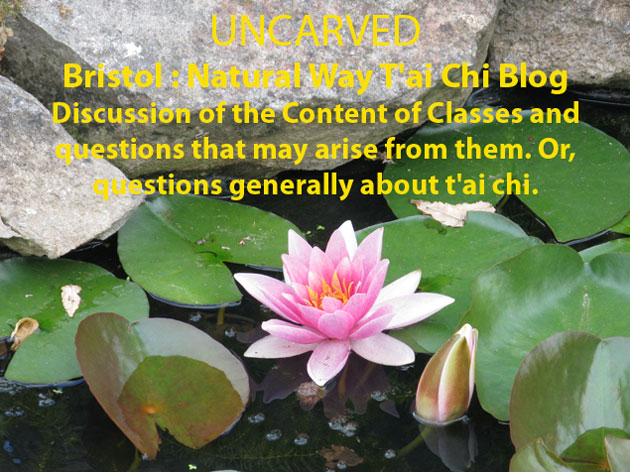Tuesday, 20 October 2009
The Bee Flies into the Hive
The Bee Flies into the hive and Phoenix Spreads Wings.
Remember to control the tip of the sword during the turn into Bee Flies into the Hive. The steps in this posture follow a circular path after turning the left foot anti clockwise.
Remember to bring the posture to the upright position. Turning the waist to the right the left forearm rotates at the elbow bringing the left hand above the right. Keep the sword arm straight. Use the leverage from the left foot to extend the force through the body during the step and sweep of the sword.
Remember to control the tip of the sword during the turn into Bee Flies into the Hive. The steps in this posture follow a circular path after turning the left foot anti clockwise.
Remember to bring the posture to the upright position. Turning the waist to the right the left forearm rotates at the elbow bringing the left hand above the right. Keep the sword arm straight. Use the leverage from the left foot to extend the force through the body during the step and sweep of the sword.
Monday, 19 October 2009
Thinking and Feeling.
When we study t'ai chi it is unfortunate that we have to spend some of the time thinking! Why is this considered to be 'unfortunate?'
Thinking takes us away from the actual experience. Yes, we have thoughts about experience, but the thoughts are not the experience. So it is best to keep thoughts to a minimum. They can be like sign posts which direct our attention to a particular feeling or they can help us discover new areas of experience .. or in other words, creative thoughts about our practice. Learning t'ai chi is a process of discovery. Ultimately the mind is directing the feeling and there is little thinking going on at all.
What do we feel? All the tactile sensations are acknowledged as part of the practice. In order to move in t'ai chi, for example, you will need to feel that the foot is pushing the body to create the weight shift and that the other leg is empty of body weight before taking a step, and so on.
The qualities of t'ai chi, such as softness and openness are experienced on a feeling level but we can use our thoughts to direct the experience. Once we have created a feeling then it will become more powerful if you let go into the feeling experience and let go of thoughts completely.
Thinking takes us away from the actual experience. Yes, we have thoughts about experience, but the thoughts are not the experience. So it is best to keep thoughts to a minimum. They can be like sign posts which direct our attention to a particular feeling or they can help us discover new areas of experience .. or in other words, creative thoughts about our practice. Learning t'ai chi is a process of discovery. Ultimately the mind is directing the feeling and there is little thinking going on at all.
What do we feel? All the tactile sensations are acknowledged as part of the practice. In order to move in t'ai chi, for example, you will need to feel that the foot is pushing the body to create the weight shift and that the other leg is empty of body weight before taking a step, and so on.
The qualities of t'ai chi, such as softness and openness are experienced on a feeling level but we can use our thoughts to direct the experience. Once we have created a feeling then it will become more powerful if you let go into the feeling experience and let go of thoughts completely.
Advice at the Beginning : Surrender to relaxation
To get the most benefit from practice we should apply relaxation. But, how do we relax? If we try to relax the very act of trying will get in the way! A good way to get around this problem is to imagine that we are relaxed already. This is an ancient method. The 'result' becomes the 'method.' When we imagine we are relaxed we stop trying... the feeling of relaxation comes and then we let that feeling take over. At this stage there is no sense of a detached self we feel totally overcome by the feeling of relaxation. Then just let it be.
We become more relaxed when we feel that we can let go of control. 'Trust' is an important part of that process of letting go. If we don't want things to be a certain way, we can let in a feeling of freedom and acceptance. This does not have to be passive state, it is also the starting place for movement and change.
Relaxation and connecting deeply with the experience of being alive is at the heart of the t'ai chi journey.
We become more relaxed when we feel that we can let go of control. 'Trust' is an important part of that process of letting go. If we don't want things to be a certain way, we can let in a feeling of freedom and acceptance. This does not have to be passive state, it is also the starting place for movement and change.
Relaxation and connecting deeply with the experience of being alive is at the heart of the t'ai chi journey.
Subscribe to:
Posts (Atom)
